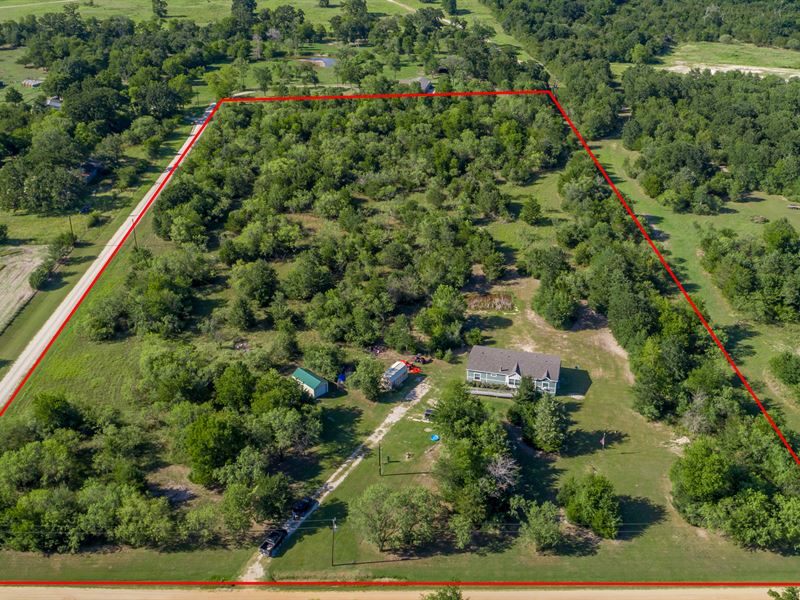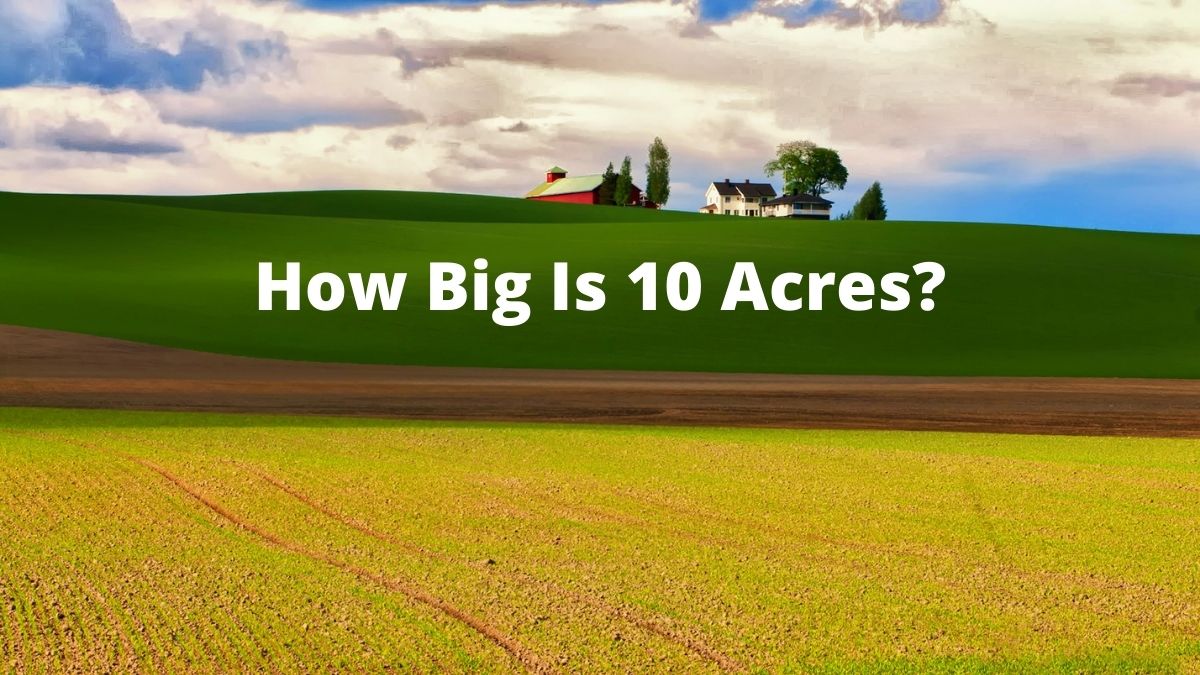Understanding the Concept of a Ranch
A ranch is a type of agricultural property that is often misunderstood or misclassified. While many people assume that a ranch is simply a large farm, the two are not interchangeable terms. A ranch typically involves the raising of livestock, such as cattle, sheep, or horses, and may also include crop farming or other agricultural activities. The key characteristic of a ranch is its focus on animal husbandry and the management of grazing lands.
In contrast, a farm is often focused on crop production, such as fruits, vegetables, or grains. While some farms may also raise livestock, the primary emphasis is on cultivating crops for food or other products. The distinction between a ranch and a farm is important, as it affects how the property is used, managed, and taxed.
When considering whether a 10-acre property is considered a ranch, it’s essential to look beyond the size of the land. While 10 acres may seem small compared to larger ranches, it’s possible to operate a successful and sustainable ranch on a smaller scale. The key factors to consider are the property’s land use, zoning regulations, and the presence of livestock or agricultural activities.
For example, a 10-acre property that is zoned for agricultural use and has a small herd of cattle or a flock of sheep may be considered a ranch. On the other hand, a 10-acre property that is primarily used for residential purposes or has no agricultural activities may not be considered a ranch, regardless of its size.
Understanding the concept of a ranch and its various definitions is crucial for property owners, policymakers, and agricultural professionals. By recognizing the differences between a ranch and a farm, we can better appreciate the unique challenges and opportunities faced by ranchers and farmers, and work to support sustainable agricultural practices that benefit both people and the environment.
How to Determine if Your Property is a Ranch
Determining whether a 10-acre property is considered a ranch requires a thorough evaluation of several factors. To help you make this determination, follow these steps:
Step 1: Review Local Zoning Regulations
Check with your local government to determine if your property is zoned for agricultural use. Zoning regulations can vary significantly depending on the location, so it’s essential to understand the specific requirements for your area. If your property is zoned for agricultural use, it may be considered a ranch, even if it’s only 10 acres.
Step 2: Assess Land Use
Consider how your property is currently being used. Are you raising livestock, growing crops, or using the land for other agricultural purposes? If so, your property may be considered a ranch, regardless of its size. However, if the land is primarily used for residential purposes or other non-agricultural activities, it may not be considered a ranch.
Step 3: Evaluate the Presence of Livestock or Agricultural Activities
The presence of livestock or agricultural activities is a critical factor in determining whether a property is a ranch. If you have a small herd of cattle, a flock of sheep, or are engaged in other agricultural activities, your property may be considered a ranch. However, if there are no livestock or agricultural activities on the property, it’s unlikely to be considered a ranch.
Step 4: Consider the Property’s History and Intent
Consider the property’s history and the intent of the original owner or developer. If the property was originally intended for agricultural use, it may be considered a ranch, even if it’s only 10 acres. Additionally, if you have plans to use the property for agricultural purposes in the future, it may be considered a ranch.
By following these steps, you can determine whether your 10-acre property is considered a ranch. Remember that the size of the land is just one factor in this determination, and other factors such as zoning regulations, land use, and the presence of livestock or agricultural activities are also important.
The Role of Land Size in Defining a Ranch
When it comes to defining a ranch, land size is often considered a critical factor. However, the relationship between land size and the definition of a ranch is more complex than it seems. Different states or regions may have varying requirements for minimum land size to be considered a ranch.
In some areas, a ranch may be defined as a property with a minimum of 20 or 50 acres of land. However, in other areas, a smaller property with as little as 5 or 10 acres may be considered a ranch if it meets certain criteria, such as being used for agricultural purposes or having a specific type of livestock.
For example, in Texas, a ranch is defined as a property with at least 10 acres of land that is used for agricultural purposes, such as raising livestock or growing crops. However, in California, a ranch is defined as a property with at least 20 acres of land that is used for agricultural purposes.
It’s also worth noting that land size is not the only factor in determining whether a property is a ranch. Other factors, such as the type of livestock or crops being raised, the property’s zoning and land-use regulations, and the owner’s intentions and goals, also play a significant role.
In the case of a 10-acre property, it’s possible that it could be considered a ranch in certain areas or under specific circumstances. However, it’s essential to consult with local authorities and experts to determine whether a 10-acre property meets the definition of a ranch in a particular region.
Ultimately, the definition of a ranch is complex and multifaceted, and land size is just one of many factors that are considered. By understanding the nuances of the definition and the varying requirements across different regions, property owners can better determine whether their property meets the criteria for a ranch.
What Constitutes a Ranch: Livestock, Crops, or Both?
A ranch can be defined as a property that is used for agricultural purposes, such as raising livestock or growing crops. However, the specific activities that constitute a ranch can vary widely depending on the region, climate, and type of property.
Some ranches may focus primarily on livestock grazing, such as cattle or sheep ranches. These properties typically have large areas of pastureland and may also have facilities for breeding, feeding, and caring for the animals.
Other ranches may focus on crop farming, such as ranches that grow hay, grains, or fruits and vegetables. These properties typically have large areas of cultivated land and may also have facilities for irrigation, fertilization, and pest management.
Many ranches, however, combine both livestock grazing and crop farming. For example, a ranch may have a herd of cattle that graze on pastureland, while also growing crops such as hay or grains to feed the animals. This type of diversified ranching operation can be beneficial for the environment, as it allows for more efficient use of resources and can help to maintain soil health.
In the case of a 10-acre property, it’s possible to have a small-scale ranching operation that combines both livestock grazing and crop farming. For example, a property owner may have a small herd of goats or sheep that graze on a few acres of pastureland, while also growing crops such as vegetables or fruits on the remaining acres.
Ultimately, the specific activities that constitute a ranch will depend on the property owner’s goals, resources, and local regulations. However, by understanding the different types of ranching operations and the activities that can be involved, property owners can better determine whether their 10-acre property can be considered a ranch.
Case Studies: Examples of 10-Acre Ranches
To illustrate the concept of a ranch and how it can be applied to a 10-acre property, let’s consider a few case studies.
Case Study 1: A 10-Acre Cattle Ranch in Texas
In Texas, a 10-acre property can be considered a ranch if it is used for cattle grazing and meets certain criteria. For example, a property owner may have a small herd of cattle that graze on the 10 acres of pastureland. The property may also have a barn, fencing, and other infrastructure to support the cattle operation.
Case Study 2: A 10-Acre Farm-Ranch in California
In California, a 10-acre property can be considered a farm-ranch if it is used for both crop farming and livestock grazing. For example, a property owner may grow avocados or other crops on 5 acres of the property, while also raising a small herd of goats or sheep on the remaining 5 acres.
Case Study 3: A 10-Acre Horse Ranch in Colorado
In Colorado, a 10-acre property can be considered a horse ranch if it is used for horse breeding, training, or boarding. For example, a property owner may have a small herd of horses that graze on the 10 acres of pastureland, while also offering horse riding lessons or boarding services.
These case studies illustrate the diversity of ranching operations that can be found on 10-acre properties. While the specific activities and characteristics of each ranch may vary, they all share a common thread – they are all considered ranches due to their use of land for agricultural purposes.
By examining these case studies, property owners can gain a better understanding of what constitutes a ranch and how their own 10-acre property can be considered a ranch.
Challenges and Opportunities of Small-Scale Ranching
Small-scale ranching, including 10-acre properties, can be a challenging but rewarding venture. One of the main challenges faced by small-scale ranchers is marketing and selling their products. With limited resources and a smaller operation, it can be difficult to compete with larger ranches and farms.
However, small-scale ranchers can also capitalize on the growing demand for locally sourced and sustainable products. By focusing on niche markets and building relationships with local customers, small-scale ranchers can create a loyal customer base and increase their sales.
Financing is another challenge faced by small-scale ranchers. With limited resources and a smaller operation, it can be difficult to secure funding for equipment, supplies, and other expenses. However, there are resources available to help small-scale ranchers access financing, such as government grants and loans, and private investors.
Resource management is also a critical aspect of small-scale ranching. With limited resources, small-scale ranchers must be efficient and effective in their use of water, feed, and other resources. This can be achieved through the use of sustainable practices, such as rotational grazing and crop rotation.
Despite the challenges, small-scale ranching can also be a highly rewarding venture. Small-scale ranchers have the opportunity to work closely with their land and animals, and to create a sustainable and profitable business. With the right resources and support, small-scale ranchers can thrive and contribute to the local food system.
In the case of a 10-acre property, small-scale ranching can be a viable option. With careful planning and management, a 10-acre property can be used to raise livestock, grow crops, and create a sustainable and profitable business. By understanding the challenges and opportunities of small-scale ranching, property owners can make informed decisions about how to use their land and create a successful ranching operation.
Conclusion: Is 10 Acres Enough to be Considered a Ranch?
In conclusion, the question of whether 10 acres is enough to be considered a ranch is a complex one. While the size of the land is an important factor, it is not the only consideration. The type of activities being conducted on the land, such as livestock grazing or crop farming, as well as the presence of zoning regulations and agricultural activities, all play a role in determining whether a property is considered a ranch.
As we have seen, different states and regions may have varying requirements for minimum land size to be considered a ranch. However, even in areas where 10 acres is not considered a traditional ranch size, it is still possible to operate a successful and sustainable ranching operation on a smaller scale.
Ultimately, the decision of whether 10 acres is enough to be considered a ranch depends on a variety of factors, including the specific activities being conducted on the land, the local regulations and zoning laws, and the goals and intentions of the property owner.
By understanding the different factors that contribute to the definition of a ranch, property owners can make informed decisions about how to use their land and create a successful and sustainable ranching operation, regardless of the size of their property.
In the next section, we will provide guidance for readers who are interested in starting their own ranch, including resources for further learning and tips for getting started with a small-scale ranching operation.
Next Steps: How to Get Started with Your Own Ranch
If you’re interested in starting your own ranch, there are several steps you can take to get started. First, research the local regulations and zoning laws in your area to determine what types of ranching activities are allowed. You should also consider the size and type of land you need, as well as the resources and equipment required to operate a successful ranch.
Next, develop a business plan that outlines your goals, objectives, and strategies for your ranch. This should include a detailed financial plan, as well as a plan for marketing and selling your products.
Once you have a solid business plan in place, you can begin to take steps to establish your ranch. This may include purchasing or leasing land, acquiring equipment and supplies, and hiring employees or contractors to help with the day-to-day operations.
Finally, consider seeking out additional resources and support to help you get started with your ranch. This may include consulting with experienced ranchers or agricultural experts, attending workshops or conferences, or joining online forums or communities related to ranching.
Some recommended resources for further learning and support include:
– The National Cattlemen’s Beef Association (NCBA) – a trade association that represents the interests of cattle ranchers and provides resources and support for the industry.
– The United States Department of Agriculture (USDA) – a government agency that provides information and resources on agriculture and ranching, including funding opportunities and technical assistance.
– Local extension offices – many states and counties have extension offices that provide information and resources on agriculture and ranching, including workshops, conferences, and one-on-one consultations.
By following these steps and seeking out additional resources and support, you can establish a successful and sustainable ranching operation, even on a small scale.





:max_bytes(150000):strip_icc()/GettyImages-172651206-85770d8552844c8a90f7a9dae543e3e1.jpg)